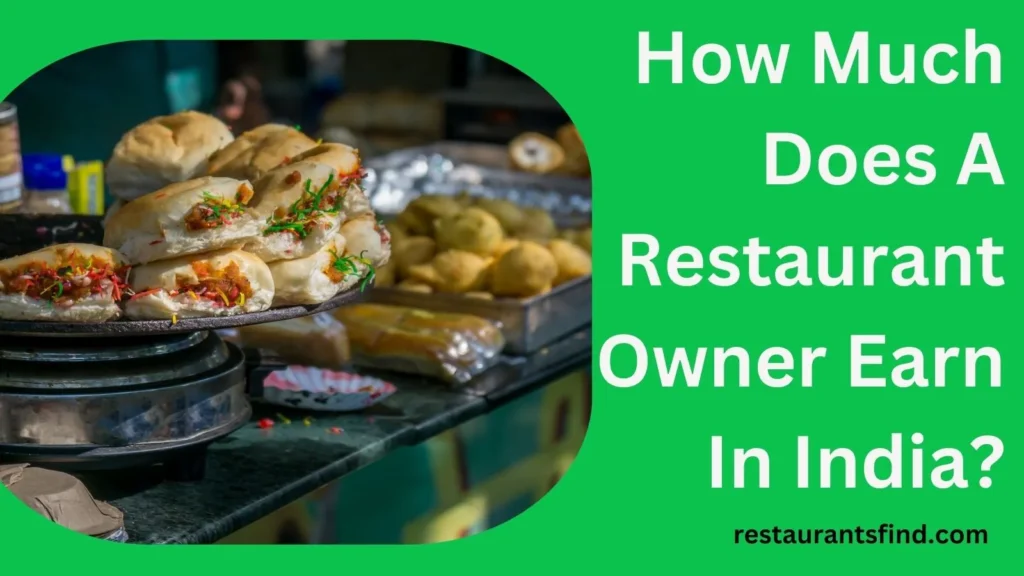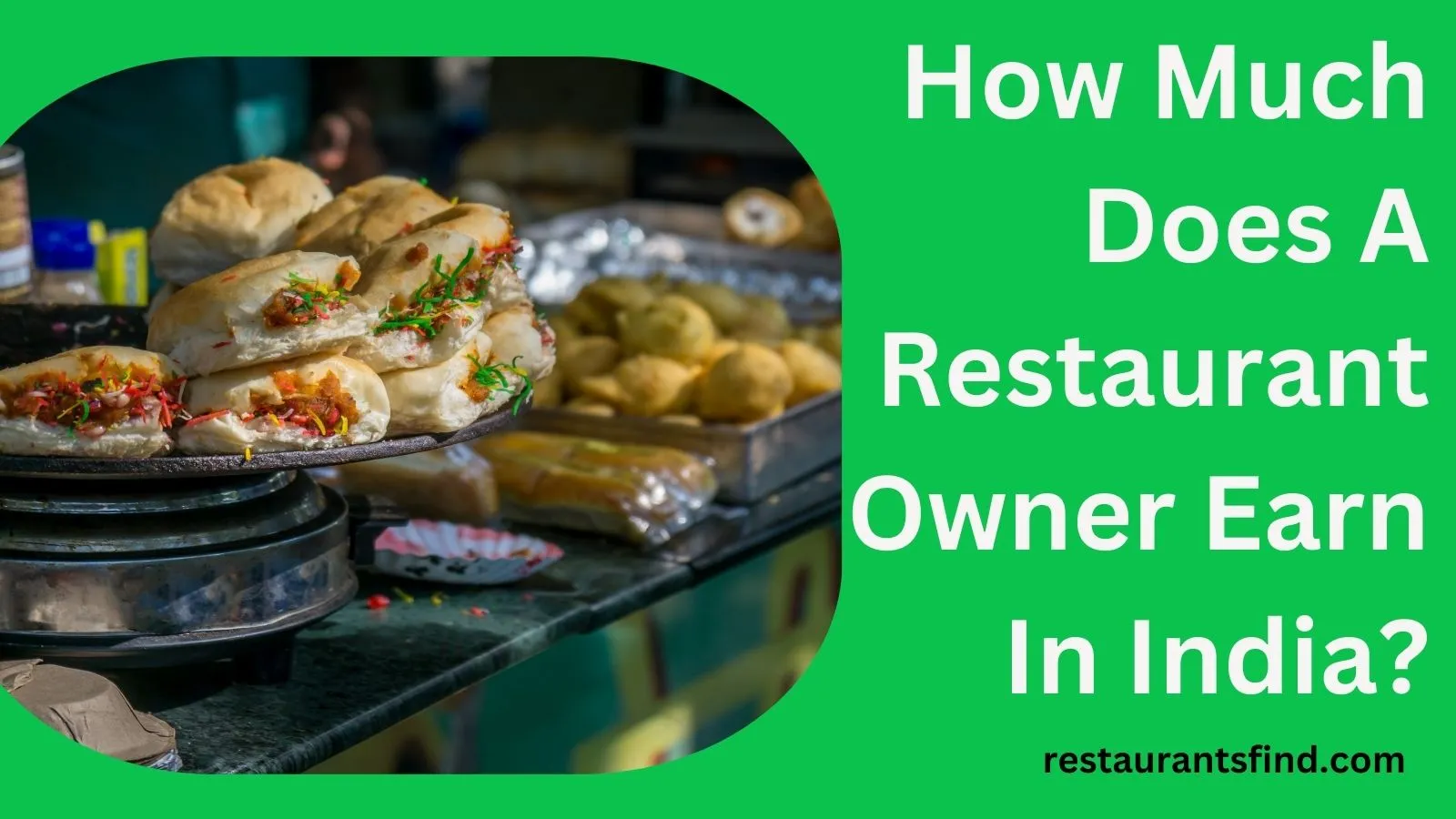If you’re considering opening a restaurant in India, you’re probably curious about how much a restaurant owner earns.
Running a restaurant isn’t easy – it needs a lot of planning, investment, and good management. However, it can also be rewarding and profitable if done correctly.
The National Restaurant Association of India (NRAI) says that India’s restaurant market is growing fast and might reach INR 5.99 lakh crore by 2022-23, with a growth rate of 9% annually. But how much money a restaurant makes depends on many things like the type of restaurant, where it’s located, how big it is, what’s on the menu, the staff, marketing, and how satisfied the customers are.
According to Payscale, restaurant owners in India can earn between $31,000 and $155,000 annually. On average, they estimate it to be around $65,000 per year. These numbers are just estimates and might not exactly match what every restaurant owner earns in India.
In this blog, we’ll talk about some things that affect how much money restaurant owners make in India and give tips on starting and running a profitable restaurant business.

Factors influencing a restaurant owner’s earnings in India
How much money a restaurant owner can make depends on a few things:
- Where It’s Located: The restaurant’s place matters a lot. It might get more customers in a popular spot like a mall or a tourist area, but the rent and taxes could be high. If it’s in a quieter area, the costs might be lower, but there might not be as many customers.
- Type of Food Served: The kind of food a restaurant offers also plays a role. It might attract a dedicated group of customers if it’s something unique or exotic, but getting specific ingredients or competing with similar places could be challenging. If it’s more common food, it might attract a broader audience and face more competition.
- Size and How Many It Can Seat: A small restaurant might have lower costs and offer a more personal experience, but it might not make as much money. A more prominent restaurant might have more fees and potentially more waste, but it could also make more money.
- Running Costs: The day-to-day costs of running a restaurant, like rent, utilities, staff salaries, taxes, licenses, and marketing, all add up. Managing these costs is crucial to making a profit.
- Competition: If many other restaurants offer similar things, it can be challenging for a new one to stand out. Understanding the market and finding ways to be unique is essential.
- Marketing and Reputation: How well the restaurant is known and what people think about it matters too. Good marketing, a catchy name, a nice menu, and positive reviews all contribute to a restaurant’s success.
Ultimately, making money as a restaurant owner is about making smart choices in where you set up, what you serve, how big you are, how you manage costs, and how well you get the word out about your place.
Average earnings of a restaurant owner in India
The earnings of a restaurant owner in India vary based on several factors, including the scale and type of the restaurant, its location, cuisine, quality, and demand.
On average, estimates suggest that a restaurant owner in India can earn anywhere from Rs. 50,000 to Rs. 10,00,000 per month.
Here’s a breakdown of earnings for different scales of restaurants:
1. Range of earnings for small, medium, and large-scale restaurants:
- Small-scale restaurants (e.g., street food stalls, cafes, takeaways): Rs. 50,000 to Rs. 2,00,000 per month, depending on location, cuisine, quality, and demand.
- Medium-scale restaurants (e.g., casual dining, family restaurants, buffets): Rs. 2,00,000 to Rs. 5,00,000 per month, influenced by similar factors.
- Large-scale restaurants (e.g., fine dining, theme restaurants, franchises): Rs. 5,00,000 to Rs. 10,00,000 per month, considering the same factors.
2. Profit Margins and Revenue Streams
The average profit margin for a restaurant in India typically falls between 10% to 15%. Revenue streams include food and beverage sales, catering, delivery, and events/parties. Offering variety, quality, and convenience can enhance revenue streams for the restaurant owner.
3. Comparison with Other Food Businesses
Restaurant owners in India earn comparable or higher incomes than other small business owners in the food industry, such as bakery owners, catering service providers, food truck owners, and online food sellers.
However, earnings are influenced by the associated risks, investments, and efforts involved in running a restaurant, which may be higher than other food businesses.
4. Impact of Economic Fluctuations and Seasonal Trends
Earnings are also affected by economic fluctuations and seasonal trends. During inflation, recession, or lockdown periods, disposable income and spending power may decrease, leading to lower demand and revenue.
Conversely, demand and revenue may increase during festivals or special occasions, resulting in higher earnings. Anticipating and adapting to these fluctuations and trends is crucial, influencing the restaurant owner’s menu planning, pricing, and promotional strategies.
Challenges for restaurant owners in India
1. Rising Costs of Ingredients and Supplies:
- The constant cost increase for ingredients and supplies like vegetables, spices, meats, and packaging due to inflation, scarcity, and taxes affects restaurant profitability and quality.
- Owners must find reliable and affordable vendors, negotiate favorable terms, and monitor inventory to control wastage.
2. Recruiting and Retaining Skilled Staff:
- The high turnover rate, low salaries, and challenging working conditions make it difficult for restaurant owners to find and retain skilled staff.
- Owners need to offer competitive salaries, incentives, training, and a positive work culture to attract and keep talented individuals.
3. Managing Customer Expectations and Experiences:
- Customer satisfaction, loyalty, and word-of-mouth depend on managing diverse, demanding, and unpredictable customer expectations and experiences.
- Restaurant owners must focus on providing high-quality food, prompt service, a clean ambiance, and transparent pricing. Handling customer feedback and complaints professionally is crucial.
Read: Can Restaurants Charge a Service Charge?
Strategies for increasing earnings as a restaurant owner in India
Increasing earnings as a restaurant owner in India involves implementing strategic measures. Here are some effective strategies:
1. Menu Pricing and Cost Control:
- Set menu prices based on the value, quality, and demand of the food, considering the competition and the target market.
- Control costs by reducing overheads, minimizing wastage, preventing theft, and enhancing overall efficiency, productivity, and quality.
2. Diversifying Revenue Streams:
- Expand revenue by offering catering, delivery, and events services.
- Create attractive packages, menus, and offers for these services to increase customer base, sales volume, and brand awareness.
- Ensure the restaurant has the capacity, staff, and equipment to handle these additional services efficiently.
3. Building a Loyal Customer Base:
- Focus on creating a loyal customer base for sustained business growth.
- Provide exceptional food, service, and value to customers.
- Implement loyalty programs, discounts, referrals, and personalized offers to reward and retain loyal customers.
4. Investing in Staff Training and Development:
- Recognize that staff training and development are fundamental to a restaurant’s success.
- Invest in regular feedback, coaching, mentoring, and learning opportunities for staff.
- Motivate and empower staff to take ownership, initiative, and responsibility for their work.
5. Collaborating with Local Suppliers and Vendors:
- Build strong partnerships with local suppliers and vendors, recognizing them as crucial partners in the restaurant’s success.
- Establish long-term, mutually beneficial relationships with suppliers.
- Negotiate optimal deals, ensuring the best quality and delivery terms for ingredients, supplies, and services.
By incorporating these strategies, restaurant owners in India can enhance profitability, broaden their customer base, and establish a solid foundation for sustained success in a competitive market.
Conclusion
India’s restaurant industry presents challenges and opportunities for entrepreneurs. The income of a restaurant owner is influenced by factors like location, cuisine, size, costs, competition, and marketing, with average earnings ranging from Rs. 50,000 to Rs. 10,00,000 per month based on the restaurant’s scale and type.
Facing challenges such as rising costs, staff turnover, customer expectations, and technology integration, restaurant owners can enhance their earnings by implementing thoughtful menu pricing, diversifying revenue streams, building customer loyalty, investing in staff training, and fostering local collaborations.
Successfully navigating these aspects can lead to a profitable and fulfilling journey in the dynamic landscape of the Indian restaurant business.

